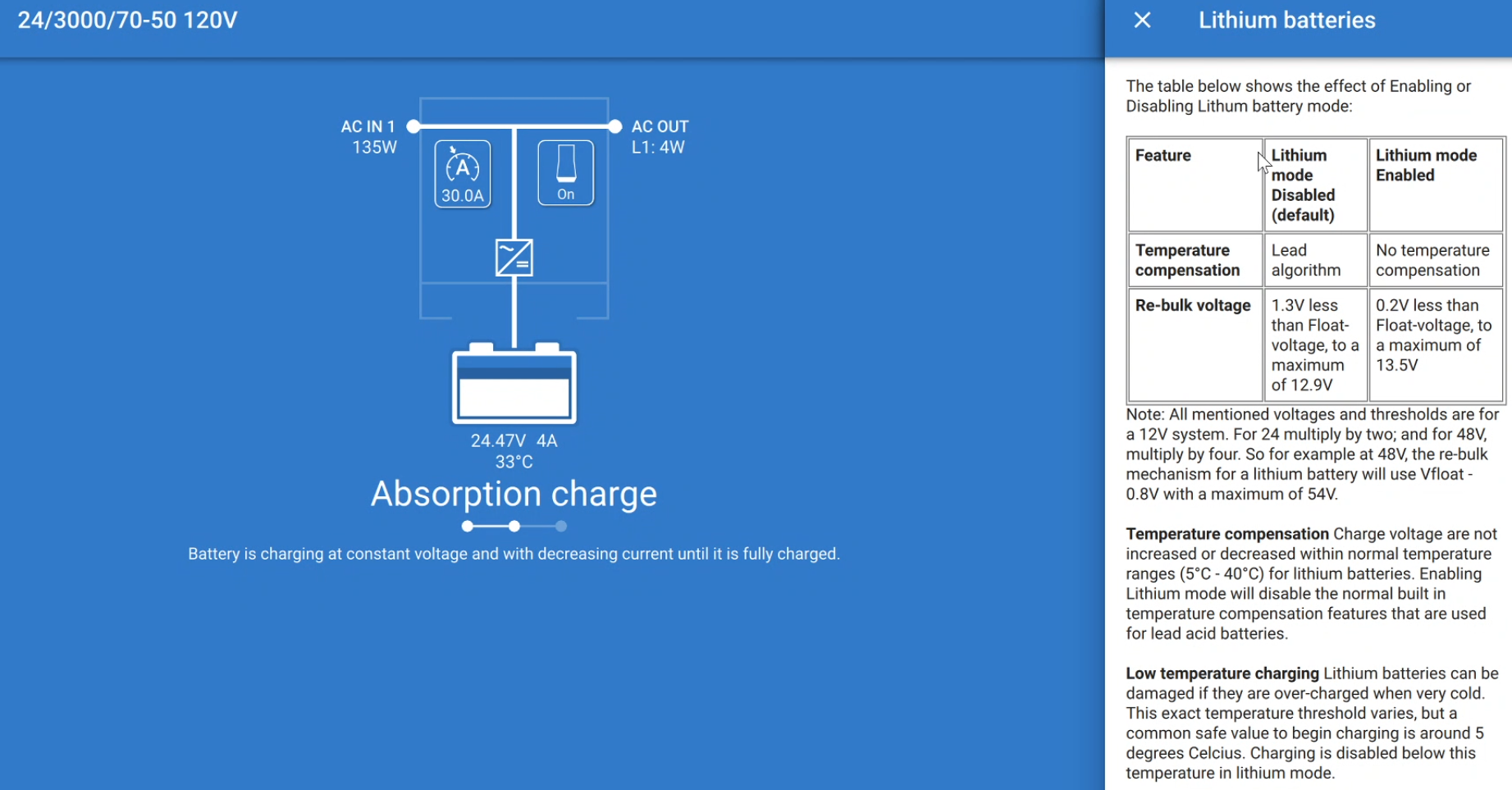Before the Question, relevant system details.
1 Tesla 6s "24v" Battery Module, your standard model S module
Victron Multiplus 24/3000/70
BMV-712 w/Temp sensor
Victron Cerbo GX
2x Victron 100/20 MPPT charge controllers
4x 200w 12v Solar panels
Heating pad for battery, which I intend to trigger with a relay function
I've been fiddling around in VE Configure 3, and I'm not yet able to find the temperature reading on the battery. I have plugged in the temp sensor, but I don't see a reading anywhere, or any way to make sure the charger doesn't activate if the battery is too cold.
So my question is, with the given devices, what's my best option for ensuring the charger doesn't activate if the battery is too cold? IE, say I arrive to a frozen RV, the heating pad needs time to warm the battery before it's safe to charge, and I'm connected with shore or generator power, which would, assuming the voltage is low enough, start charging the battery.
If I've read correctly, I should be able to communicate with the MPPT controllers with the BMV-712 via bluetooth, though that seems a bit sketchy. I'd feel a lot better with a hard wired connection. I'm not sure how the internal temperature sensor for the MPPT controllers would work. is that somehow measuring the battery temp, or just ambient temp? The docs aren't entirely clear there. Is there a way to wire it directly from the Cerbo GX which I assume, can read the temperature from the MultiPlus?
So I suppose to summarize my question(s), given the above components, what's the best way to disengage the MPPT controllers and the charger when the battery is too cold?

